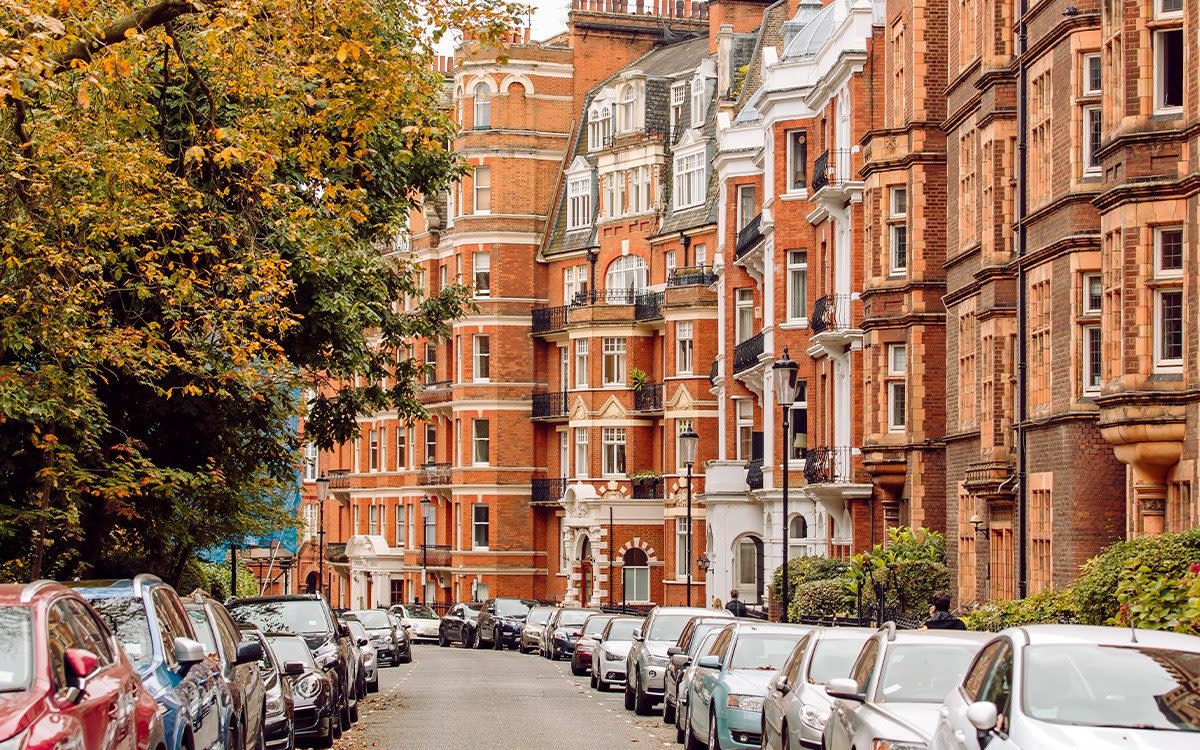The worst places to invest in buy-to-let

Buying a property and renting it out can be a lucrative way of building your wealth.
Buy-to-let investors have previously received net returns as high as 82 per cent over five years, but not all areas will be as profitable as others.
To help you avoid disappointing returns, Telegraph Money finds out which areas offer the lowest gains.
Worst returns
Two major factors that you need to consider when investing are rental yields and capital growth.
When both are taken into account, London offers lower returns than any region in England and Wales, according to Hamptons estate agents.
Investors in London received a net return of 18 per cent from 2018 to 2022, which takes into account both capital growth and rents, but subtracts mortgage and maintenance costs. The analysis assumes a 25 per cent deposit on the mortgage.
Robert Jones, of Property Investment UK, said investors fare worse in London because the cost of buying a property is so high.
The average price paid by a buy-to-let investor in London is £579,717, higher than any other region, according to Hamptons. The second-lowest region for returns – the South East – also has the second-highest average price paid by investors, at £322,518.
Landlords in London can charge higher rents but the margin between the rents and mortgage payments is still not enough to compensate for the investment cost.
Mr Jones said: “The cost of the property is quite high, and very often the rentals don't kind of keep up in terms of any pace in growth in quite the same way, so you have a disparity between what the cost of the asset might be and the rental income that you might get, and therefore your yields as a percentage may be lower when compared with other more balanced areas."
London also experienced lower price growth during the pandemic relative to other areas as remote workers fled the city in search of more space and a better quality of life.
While many are returning, there are signs that hybrid working is here to stay and property buyers are choosing more affordable places with lower mortgage payments and good commuter links to the city. This could further dampen capital growth in London.
Kensington and Chelsea was the local authority area that offered the lowest net returns, at just 2 per cent over five years. Westminster and Hammersmith and Fulham paid out 3 per cent and 4 per cent respectively.
The average price paid by an investor in Kensington and Chelsea was £1.3m, while those in Westminster and Hammersmith and Fulham paid £1.9m and £794,951 respectively.
Investors there who opt for terraces, semi-detached or fully detached properties would end up paying more in mortgage costs and taxes than they earn in rent each year, so investors should beware of renting out properties there that are not flats.
Camden, Tower Hamlets, Wandsworth, Lambeth and Barnet were other London boroughs that were among the worst 10 areas for net returns.
Two London suburbs – Reading and Slough in Berkshire – could also disappoint investors, with returns of 11 per cent and 14 per cent.
Out of the top 20 areas with the worst returns, 15 were in London and five were in the surrounding areas.
The common theme among these low-performing areas is the high cost of buying a property there, which in turn affects mortgage payments. The average price paid by investors was above £300,000 in all of these places.
By contrast, in the top 34 areas for net returns, buy-to-let investors paid less than £200,000 on average for their properties. The average investor purchase price in England and Wales is £273,616.
Lowest yields

Some investors prefer to focus on areas that generate high rental yields and disregard capital growth.
David Fell, of Hamptons, said yields are likely to become increasingly important given that house prices are falling. Research consultancies like Oxford Economics and Capital Economics have forecast drops of 12 per cent in 2023.
It is harder to predict what will happen in the long term, but some capital growth is still expected over a five-year period once the housing market recovers.
Mr Jones said rental yields tend to be more consistent each year than house prices.
But even if capital growth is not factored in, London still comes out as the worst option for investors in England and Wales.
The average yield is 5 per cent, which is far lower than the 7.3 per cent that can be achieved in Wales and the North West.
Out of the top 20 local authority areas with the lowest rental yields, seven were in London. These included the City of Westminster, Waltham Forest, City of London, Kensington and Chelsea and Wandsworth, where mortgage costs are high because of prices.
The London suburb of Three Rivers, Hertfordshire, offers the lowest rental gross rental yield of any local authority in England and Wales. Investors who buy property there will earn just 4 per cent.
Cambridge and Ryedale in North Yorkshire pay 4.1 per cent and 4.2 per cent respectively.
Other areas with low yields are Sevenoaks in Kent, the coastal area of South Hams in Devon, St Albans in Hertfordshire and Derbyshire Dales in the East Midlands.
These areas all have rental yields of below 5 per cent. This is markedly less than yields of 8 per cent and above that are to be had in other parts of the country.
It is worth bearing in mind that landlords face increasing costs because of soaring mortgage rates, as well as falling house prices, so returns are likely to be lower than they have been over the past years.
One way you can protect yourself is by buying in cash or paying larger deposits to limit the size of your mortgage.
Worst regulations
Buy-to-let investors should perhaps avoid buying properties in Scotland after a series of anti-landlord polices were put in place by Nicola Sturgeon's government.
A cap on rents is having an impact on landlords' returns, and a ban on evictions is making it harder for landlords to reclaim possession of their properties compared with England. Taxes are also higher in Scotland.
Other considerations
Landlords should make sure they have thoroughly researched the areas they buy properties in, according to trade body the National Residential Landlords Association.
Many investors start out in areas close to where they live because they understand the market and what tenants are looking for.
Chris Norris, of the NRLA, said: “I think it's very easy to get swayed by big, shiny new developments in cities a long way away from where you live.
“I speak to more landlords actually who have a really hard time with those developments than probably anything else, because they haven't understood what the market is like in that city and they haven't understood who their target customers are.”
The type of property is another factor worth considering as it can have an impact on returns.
Mr Jones said this varies in different areas depending on what the needs of local tenants are, but starter homes tend to work best – these are usually one and two-bedroom flats and terraced houses.

